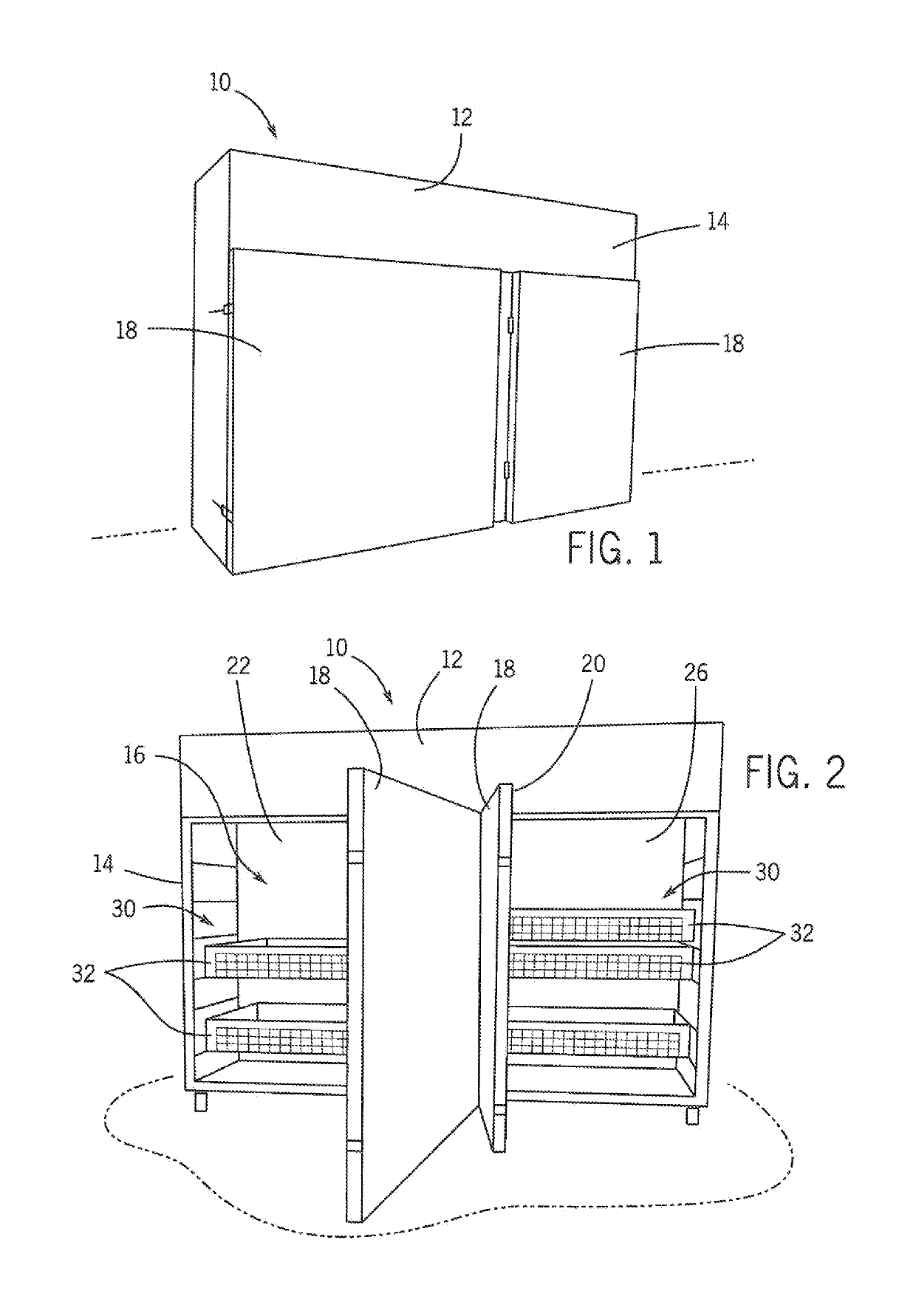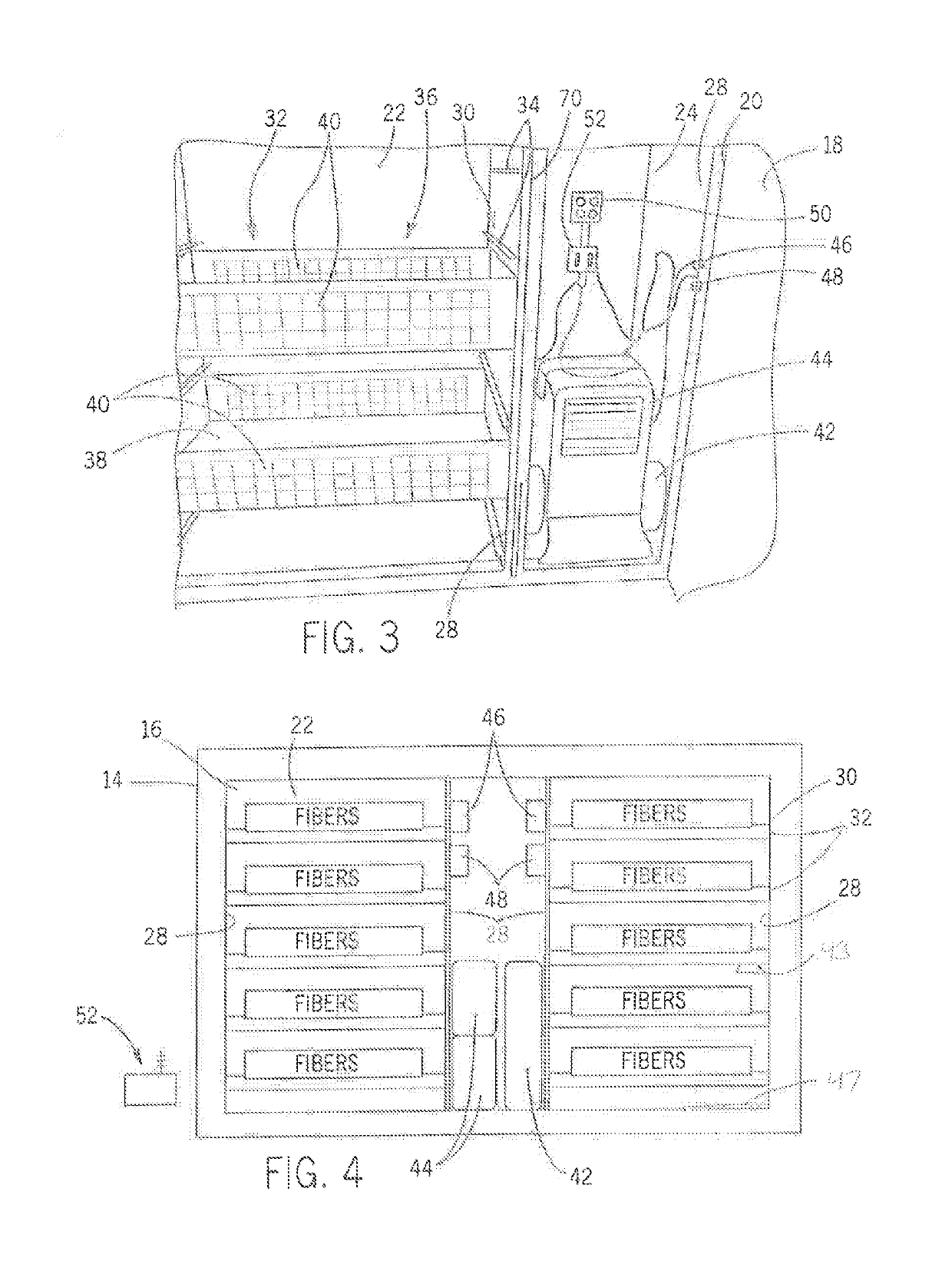Dehumidification system and method used for drying fibers
a fiber and dehumidification system technology, applied in the field of biocomposite materials, can solve the problems of wasting energy and space, affecting the decomposition of fibers, and damage to the molecular structure of fibers, so as to reduce/prevent the discoloration, odor, and decomposition of fibers. the effect of us
- Summary
- Abstract
- Description
- Claims
- Application Information
AI Technical Summary
Benefits of technology
Problems solved by technology
Method used
Image
Examples
Embodiment Construction
[0015]With reference now to the drawing figure in which like reference numerals designate like parts throughout the disclosure, an exemplary embodiment of a system or apparatus provided for drying various types of fibers and / or fibrous materials in order for use of the fibers / fibrous material in a biocomposite material is illustrated generally at 10 in FIG. 1. This system and method is related to the processes disclosed in co-owned and co-pending U.S. patent application Ser. No. 14 / 087,326, filed on Nov. 22, 2013, the entirety of which is expressly incorporated by reference herein.
[0016]In the illustrated embodiment, the system 10 includes a cabinet 12 formed of any suitable type of material, such as a metal or plastic material. The cabinet 12 includes an insulated enclosure 14 that defines an interior 16. The interior 16 is accessed using a pair of doors 18 that are pivotally or otherwise movably connected to the enclosure 14, though any number of doors 18 can be utilized as desire...
PUM
| Property | Measurement | Unit |
|---|---|---|
| humidity | aaaaa | aaaaa |
| size | aaaaa | aaaaa |
| angle | aaaaa | aaaaa |
Abstract
Description
Claims
Application Information
 Login to View More
Login to View More - R&D
- Intellectual Property
- Life Sciences
- Materials
- Tech Scout
- Unparalleled Data Quality
- Higher Quality Content
- 60% Fewer Hallucinations
Browse by: Latest US Patents, China's latest patents, Technical Efficacy Thesaurus, Application Domain, Technology Topic, Popular Technical Reports.
© 2025 PatSnap. All rights reserved.Legal|Privacy policy|Modern Slavery Act Transparency Statement|Sitemap|About US| Contact US: help@patsnap.com


